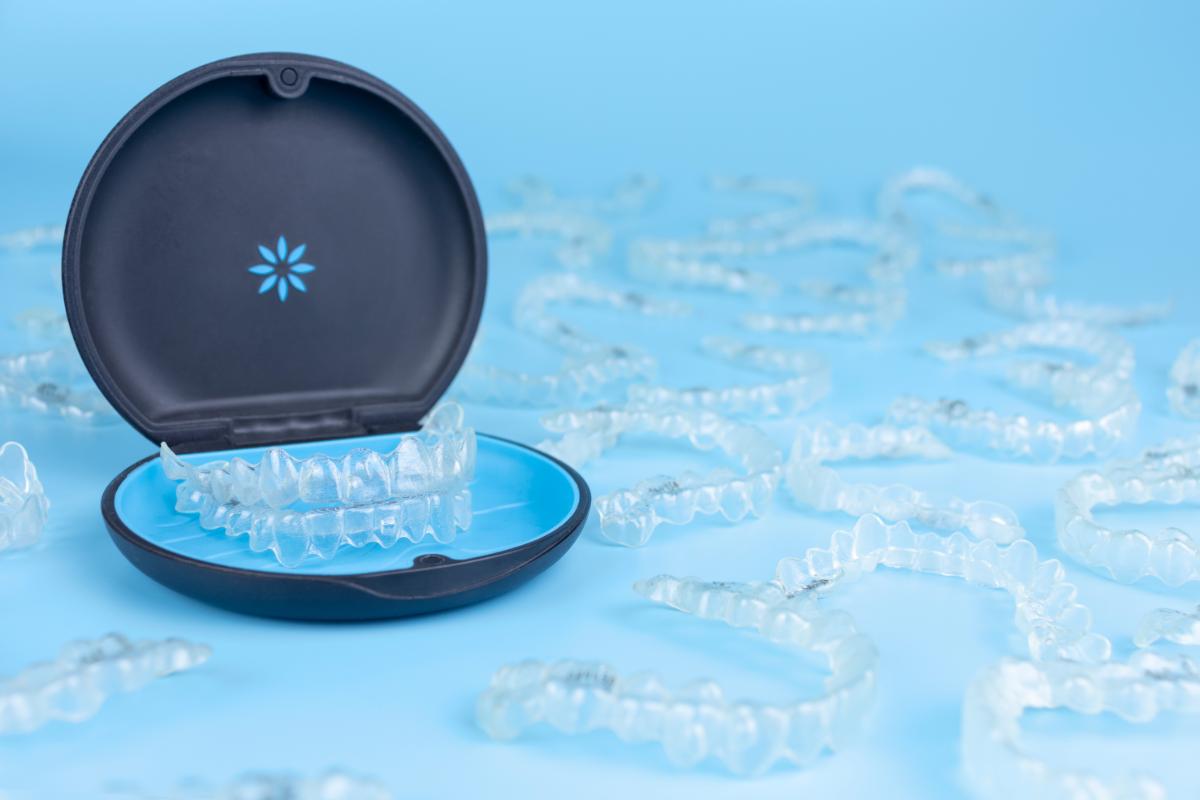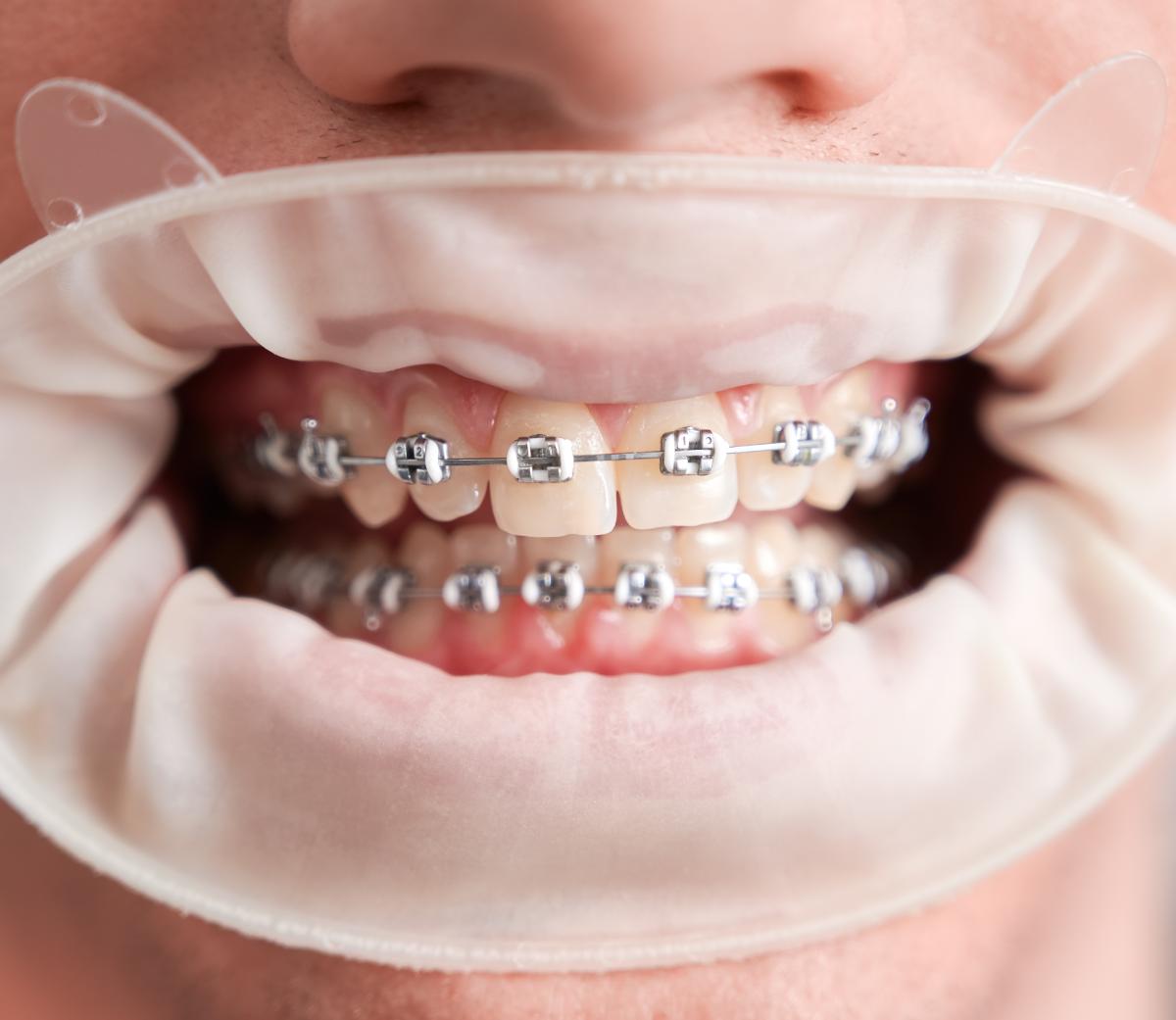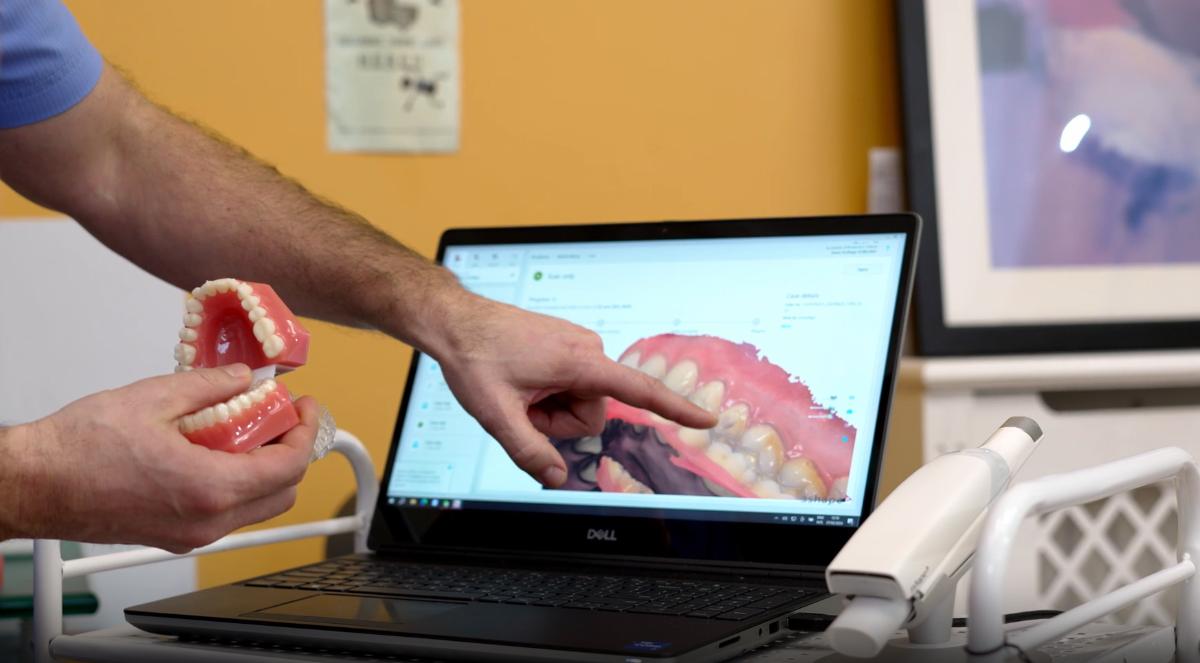Invisalign vs Braces | Which Is Best for You?

Invisalign aligners and traditional braces are two of the most popular types of orthodontic treatments, yet they differ in many ways, from cost to how they look to general maintenance. To help you understand which could be the best choice for your smile, we’ll compare and contrast these two treatments, looking at the benefits of each.
For the most accurate needs assessment, please schedule a FREE initial consultation with our Oxford-based orthodontic team.
Comparing Invisalign vs Braces
|
Invisalign |
Traditional Braces |
|
|
Severity of Issue |
Mild to moderate orthodontic issues. |
Suitable for the majority of orthodontic issues. |
|
Cost |
Generally more expensive, between £3,000 to £5,000. |
Cheapest form of treatment, between £2,300 to £3,900. |
|
Treatment Length |
Often faster, between 12 to 18 months, on average. |
Standard timeline of 18 to 24 months. |
|
Removable? |
Yes, can be removed for meals and brushing teeth. |
No, fixed in place until the treatment is completed. |
|
Noticeable? |
Virtually invisible. |
Visible metal brackets and wires. |
|
Ease of Hygiene |
Simple to maintain - you can brush and floss as usual. |
More challenging and requires more time to brush. |
What Are Invisalign Aligners?

Invisalign aligners are a series of custom-made, virtually invisible, removable clear plastic trays that gently and gradually shift your teeth into their desired positions. Whilst other brands of aligners exist, (like Angel aligners), Invisalign is one of the most well-known around the world.
What Are the Pros of Invisalign?
Let’s assess the wide range of benefits that Invisalign aligners provide:
- Clear Appearance: Because they’re nearly invisible when worn, most people won’t notice you’re undergoing treatment, making them an especially appealing choice for adults and teens who want a discreet way to straighten their smile.
- Greater Comfort: Unlike metal brackets and wires, Invisalign aligners have smooth, rounded edges that won’t irritate your cheeks or lips. They’re bespoke-made to follow the contours of your gum line, so you’ll experience far less poking or rubbing.
- Easier to Eat Food With: Since you simply take your aligners out before meals, there are no dietary restrictions. Therefore, you can enjoy crunchy foods like apples without the risk of damage to your orthodontic device!
- Simple to Maintain Oral Hygiene: With Invisalign, you brush and floss exactly as you would without orthodontics. Simply remove your trays, clean them with Invisalign cleaning crystals, and follow your normal brushing routine.
- Fewer Orthodontic Checkups: Your treatment plan is mapped out in advance with 3D imaging, and you’ll receive several sets of aligners to change at home every one to two weeks. That means fewer in-office visits - typically once every six to eight weeks.
- Often a Faster Form of Treatment: Because Invisalign’s movements are carefully sequenced, many cases reach their final position quicker than metal braces. While results vary, it’s not uncommon for Invisalign treatment to be completed several months earlier!
What Are the Cons of Invisalign?
There are a few considerations associated with Invisalign aligners, most notably:
- Higher Costs: Invisalign treatment typically carries a larger price tag compared to traditional braces. The advanced 3D imaging, custom‐made design, and specialised plastic all contribute to a higher upfront investment.
- Requires Patient Discipline: To achieve the planned tooth movement, aligners must be worn 20 to 22 hours per day. Skipping hours, forgetting to replace trays on schedule, or misplacing them can delay progress and extend the treatment time.
- Limited for Complex Corrections: While Invisalign excels at mild to moderate alignment issues, like minor overcrowding, it can be less successful for severe bite problems. For larger orthodontic problems, we would recommend braces, although this is often on a case-by-case basis.
- Not Available on the NHS: Unlike traditional metallic braces, aligners are not available on the NHS. Although this means you’ll have to pay, private orthodontists don’t have anywhere near as long of a waiting list!
What Are Traditional Braces?

Traditional braces consist of small metal brackets bonded to each tooth and connected by a thin, flexible archwire. Over time, gentle adjustments to the wire’s tension shift teeth into their correct positions. On the NHS, fixed metal braces are the only orthodontic treatment provided free to under-18s (subject to clinical need and an IOTN assessment).
What Are the Pros of Traditional Braces?
Traditional braces also provide a wide range of benefits, including:
- Effective for Complex Cases: Traditional braces can tackle the most challenging orthodontic issues because the bonded brackets and adjustable wires allow your orthodontist to apply highly controlled forces in all directions.
- Cheapest Form of Orthodontic Treatment: Among all orthodontic options, fixed braces generally come with the lowest upfront cost. The materials involved - metal brackets and archwires - are less expensive to manufacture and replace than aligners.
- Proven, Reliable Results: Traditional braces consistently deliver effective outcomes, since they’ve had decades of clinical research behind them, and are the most common form of orthodontic treatment.
- Versatile Treatment Options: If you don’t like the appearance of traditional metal braces, ceramic fixed braces offer a more discreet look. Alternatively, Lingual “Incognito” braces, which are fitted behind the teeth, offer a completely hidden appearance.
What Are the Cons of Traditional Braces?
Much like aligners, braces also come with a few considerations, such as:
- More Noticeable Compared to Invisalign: Traditional braces can be seen when you talk, smile, or laugh, which may make some people feel self-conscious. However, aligners or Incognito braces offer a more discreet option.
- Dietary Restrictions Required: Sticky, hard or chewy foods - like caramel, popcorn, or nuts - can damage brackets and wires. You’ll need to avoid these items or take extra care when eating, which can feel limiting and inconvenient.
- Initial Discomfort and Soreness: After your braces are first placed and after each adjustment, it’s common to experience pressure, tenderness and minor irritation of the cheeks and lips. However, this typically subsides within a few days.
- More Challenging Oral Hygiene: Brackets and wires allow for the easy buildup of food particles and plaque. To maintain proper oral hygiene, you’ll need to spend extra time brushing around each bracket.
What Alternative Options Are Available?
Invisalign aligners and traditional metal braces aren’t your only options when it comes to orthodontic treatment; however, these can only be accessed through a private orthodontist. Although Invisalign is one of the most popular forms of aligners, Angel aligners have grown in popularity, successfully treating over a million smiles worldwide.
There are also ceramic braces, which are tooth-coloured and less noticeable, as well as Lingual “Incognito” braces, which are completely hidden behind the teeth, rather than placed in front of them.
How Can I Make the Best Choice?

Although we’ve discussed the pros and cons of Invisalign vs metal braces, ultimately, the best guidance will come from your orthodontist. During your comprehensive assessment, the severity of your orthodontic problem will be investigated to determine the best route of treatment, and your orthodontist will explain their recommendations. These suggestions are driven by detailed photographs and 3D videos, which help map the most accurate, bespoke treatment plan.
Our Orthodontic Experts Will Find the Best Solution for You!
Orthodontic problems, like overbites, have the potential to worsen over time and can have a huge impact on your daily life. If you have jaw pain or aches outside the scope of your dentist, we strongly recommend getting the issues checked as soon as possible.
At Accessible Orthodontics, our experienced team can efficiently diagnose and treat a whole range of oral issues, shifting your teeth back to their correct position for a straighter smile. To get started with us, please schedule a FREE online or face-to-face consultation.
Latest Posts
-
Preparing Your Child for Their First Braces Appointment
-
Dealing with Braces Pain: How to Comfort Your Child
-
Brace-Friendly Meal Ideas
-
What Causes Crooked Teeth (and Can You Prevent It?)
-
Top 10 Signs Your Child May Need Braces: Advice From an Oxford Orthodontist
-
25 Orthodontic Stats & Facts That Will Surprise You
-
What Foods Can & Can’t You Eat With Braces?
-
Invisalign vs Braces | Which Is Best for You?
-
How Much Do Braces Cost in 2025?
-
What Are the Alternatives to Braces?